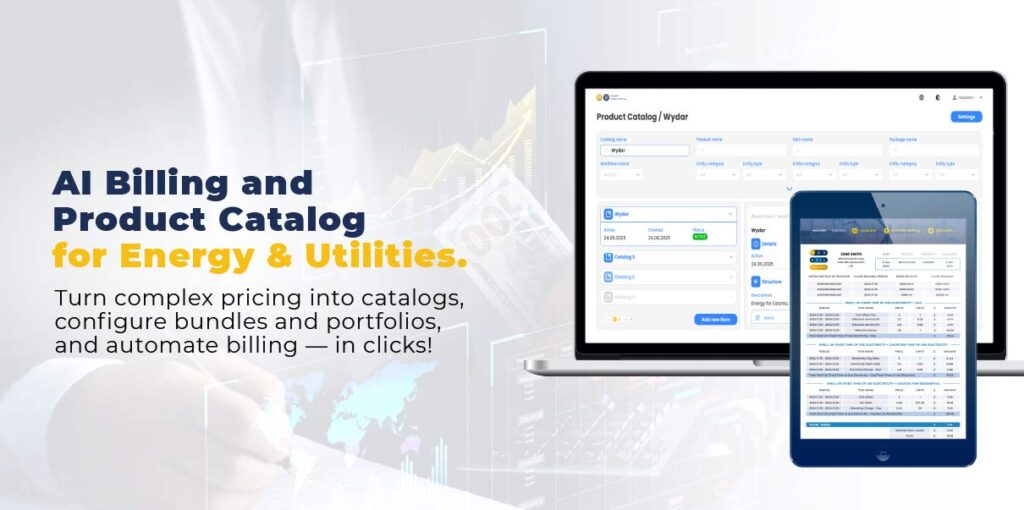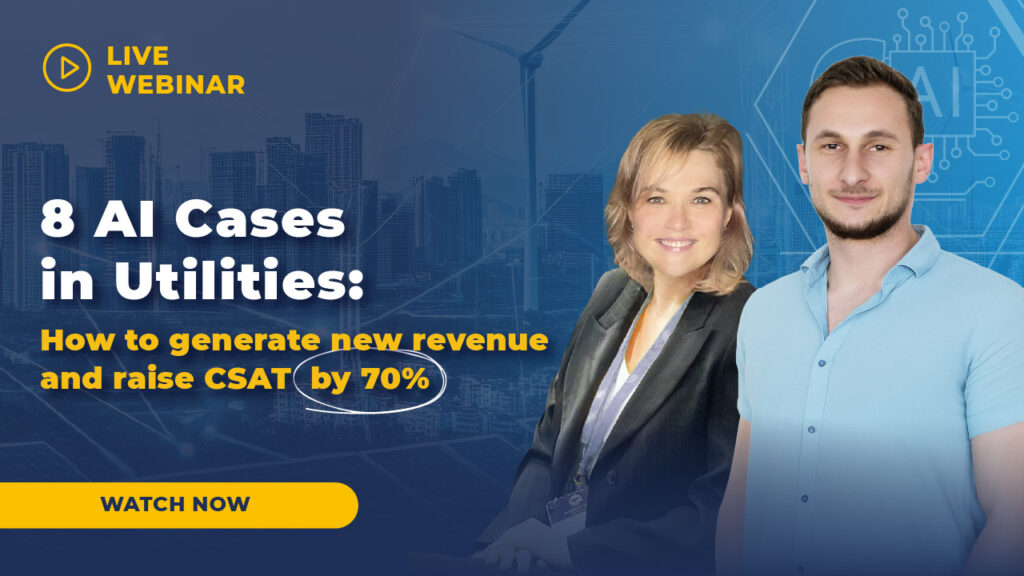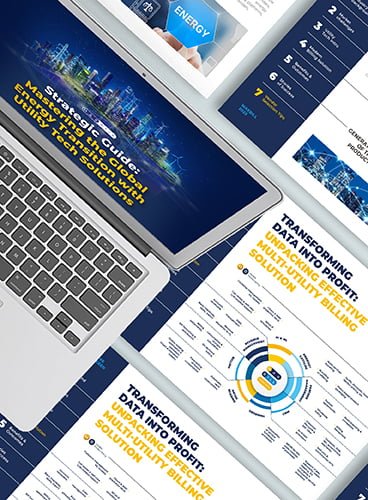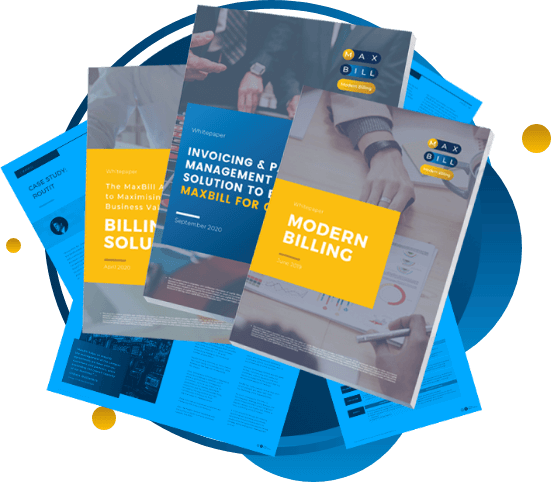Utilities have long been seen as an “orthodoxly conservative industry.” But today, artificial intelligence is making its way into critical areas of utility operations — from customer service to revenue management.
Still, many utility leaders hesitate. The hesitation is not without reason: introducing AI isn’t just about efficiency, it’s about protecting customer safety and data.
In this article, we’ll walk through the main concerns we hear from:
- utility executives at roundtables,
- sector analysts and research firms such as IDC,
- and potential customers when we present the MaxBill AI product suite.
To help make things clear, we asked Roni Rechter, Head of MaxBill AI Billing, to address the most common doubts.
Concern 1: AI in utilities is a black box
One IDC representative asked us directly: “How do you ensure strict governance of something that works like a black box? How do you guarantee the auditability of billing calculations?”
Roni explains:
“AI doesn’t bill customers directly. What it does is generate a piece of code, and that code is then executed by the billing engine to apply charges. That means every single step can be tracked, verified, and audited.”
Instead of one opaque process, AI at MaxBill works through chains of models. Each chain has clear rules and restrictions. Every output can be traced back to the input, making it easy to justify the result to both customers and regulators.
There’s also an audit trail: each process, each step, and each output is tracked. For example, if three chains process business experts’ inputs, we can follow how each chain contributed to the final billing formula.
In simple terms: AI figures out the logic and writes the code, but the actual billing math is done by the engine — not by AI itself.
Concern 2: Can financial accuracy be trusted? What about hallucinations?
Another common doubt is whether AI might “hallucinate” — in other words, produce incorrect outputs.
Roni clarifies:
“AI helps with unstructured data — parsing free text, setting up new offers, generating scripts — but the billing calculations themselves are done by the billing engine, not by AI. Plus, a human always reviews offers in the product catalog.”
The term “hallucinations” has become outdated in the way we use AI. Because our models work within strict limits, every step is verified. There’s simply no room for random results.

Concern 3: Is customer data safe?
Leaders often worry about data leakage.
Here’s how Roni addresses it:
“All personal and commercial data stays within our secure perimeter. Nothing is sent outside.”
If the software is deployed locally, the data never leaves your servers. For cloud solutions that rely on providers like OpenAI, Gemini, or Claude, MaxBill works under GDPR agreements. In both cases, customer data remains protected and compliant.
Concern 4: Will ROI be visible from the start?
Skepticism about ROI is natural, especially in an industry where large IT projects often overrun budgets.
According to Roni:
“The difference with AI is speed. Users immediately see how fast they can create and launch new offers. What used to take months now takes days. That faster time-to-market is the most visible benefit.”
AI also reduces manual work. Fewer employees are tied up in repetitive tasks, which cuts operational costs. The impact becomes visible on the revenue line by the end of the year.
Concern 5: Do we need to replace the entire legacy system?
Many utilities ask whether AI can work alongside existing systems.
Roni says:
“AI can run in parallel with legacy systems. Over time, it can take over more and more functionality, showing its efficiency step by step.”
So instead of a disruptive overhaul, utilities can implement AI gradually — first in new business lines or services, then across the organisation.
Concern 6: Won’t AI chatbots damage customer relationships?
Utilities have had bad experiences with traditional chatbots that frustrate customers.
Roni explains:
“Those old chatbots as we know it are not AI. Modern AI agents are different — they give contextual responses, explain bills clearly, and know when to pass the case to a human.”
For example, if a customer asks “Why is my bill so high?”, an AI agent can pull data, explain the reason, and even provide regulatory context. If empathy is needed, the query is routed to a live CSR.
This way, AI agents enhance — not damage — customer experience.
Discover MaxBill AI Self-Care:
Concern 7: Will teams struggle to adapt?
New technology usually comes with a steep learning curve. But with AI, it’s the opposite.
“Learning to use AI-enhanced billing or CRM systems is easier than mastering complex traditional software,” Roni notes.
Since AI automates routine tasks, employees have less manual work. Adoption is faster, and utilities that delay will only risk falling behind competitors.
Concern 8: Does AI increase dependence on vendors?
Dependence is a fact in any IT setup. But with AI, it’s reduced.
Roni explains:
“Think about it: if your in-house developers leave, your system may suffer. With AI, the reliance on individual expertise is minimized. The rules and outputs are embedded in the system.”
Concern 9: Who is responsible if AI outputs are wrong?
The responsibility lies with the vendor. And because each AI decision is transparent (see concern 1), errors can be identified and explained.
Concern 10: Is AI autonomous, or is there a human in the loop?
“AI is smart enough to recognise when a case needs human attention. It can assign the task to the right CSR and prepare all the context,” Roni explains.
This hybrid model ensures customers get accurate information quickly, while still benefiting from human empathy when needed.
Bonus: the hidden advantage of AI billing
One of the biggest barriers to launching new billing systems is risk — costs, time, and unexpected issues like failed data migration.
Here’s where AI makes a difference. At MaxBill, when replacing a legacy system, we record the old one’s inputs and outputs, compare failures, and let AI highlight discrepancies. AI not only helps fix errors but also predicts outcomes that weren’t part of the original requirements.
That means utilities can transition with fewer risks — and uncover insights they never expected.
Watch the webinar “8 AI cases in Utilities: How to generate new revenue and raise CSAT by 70%.”

































